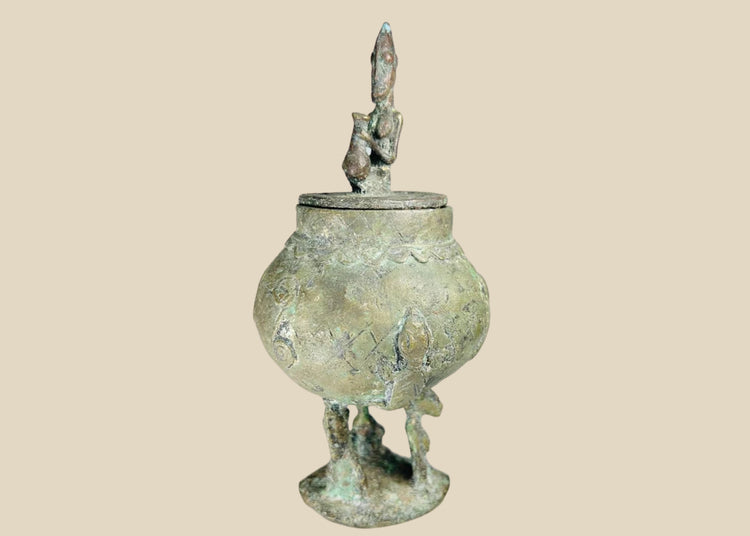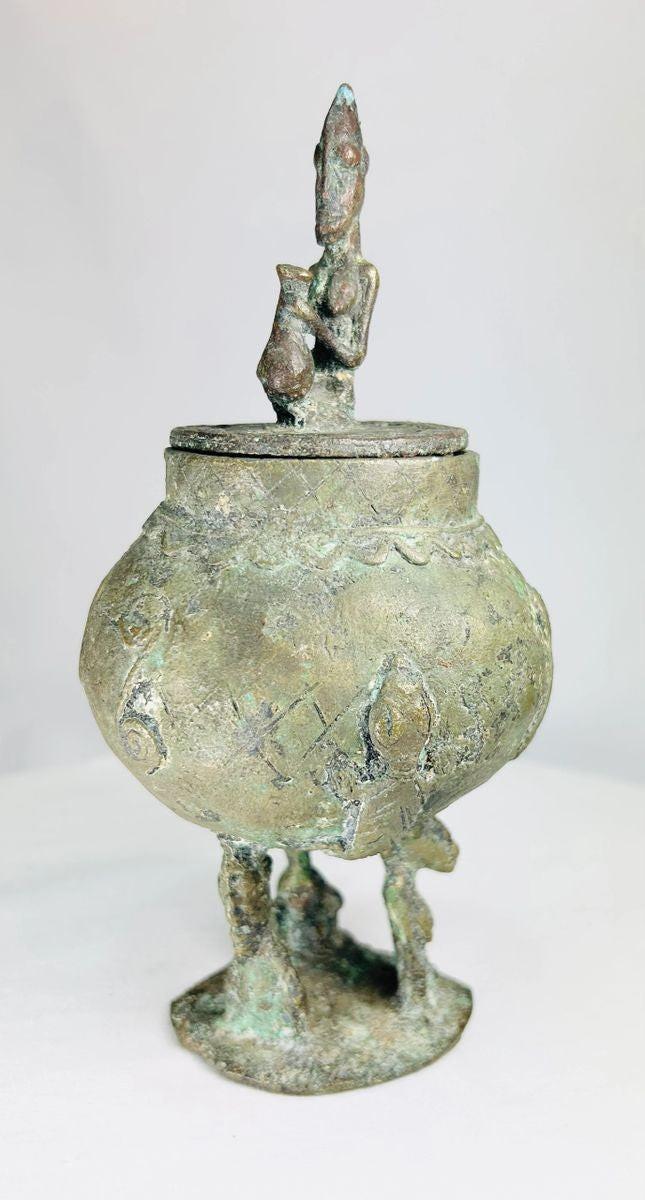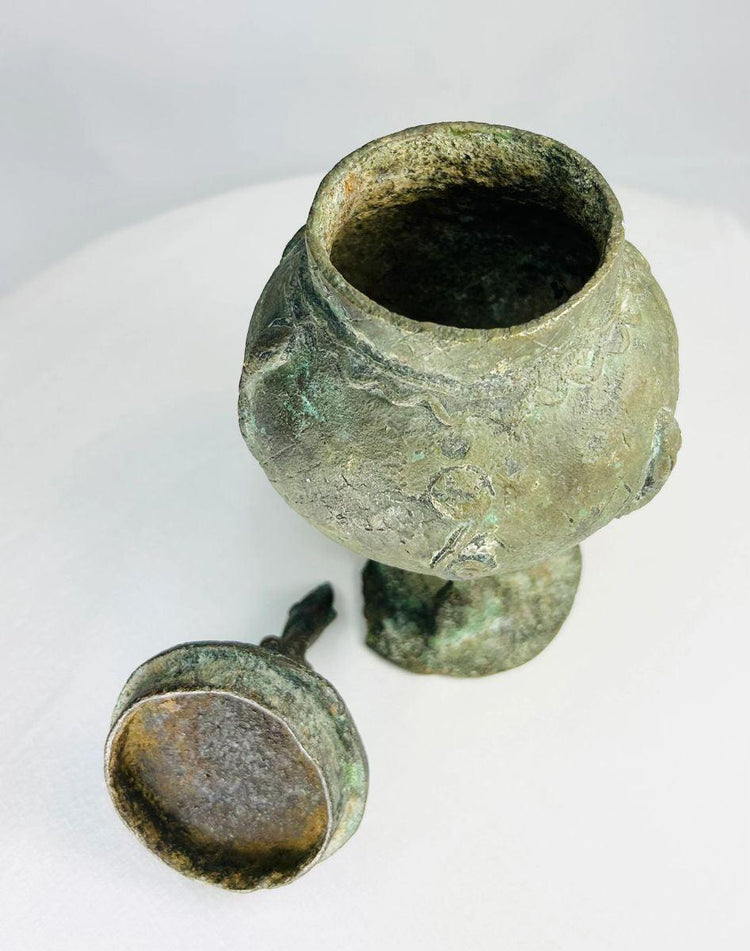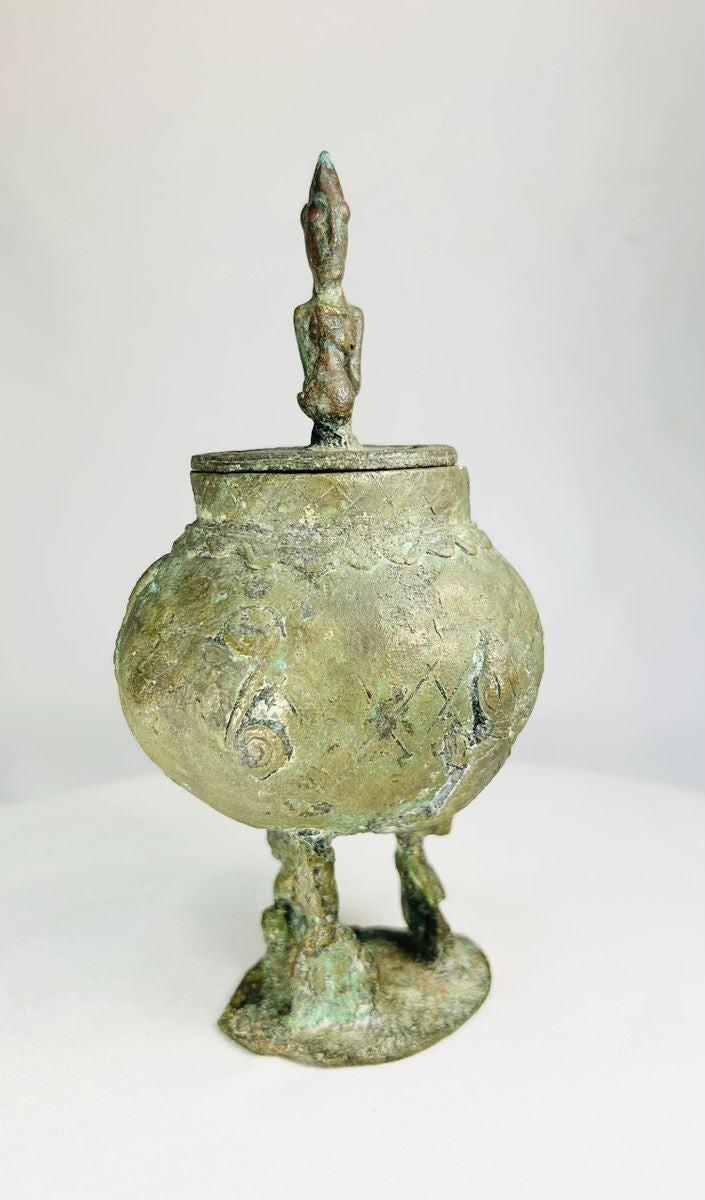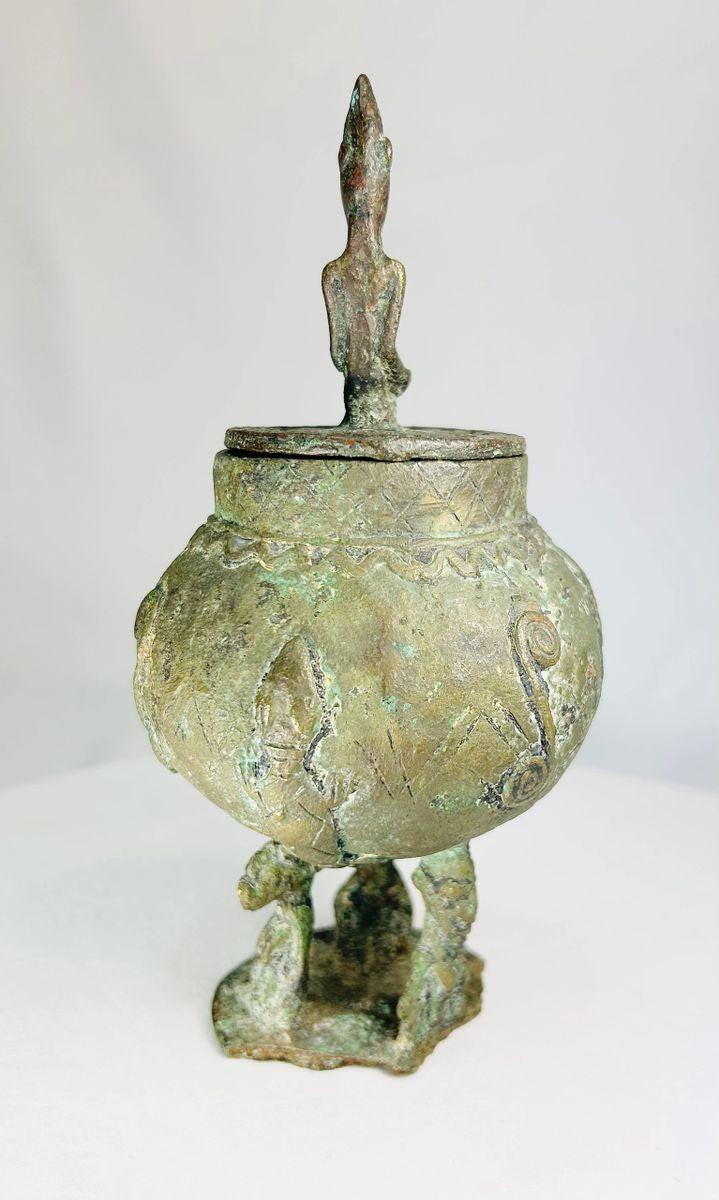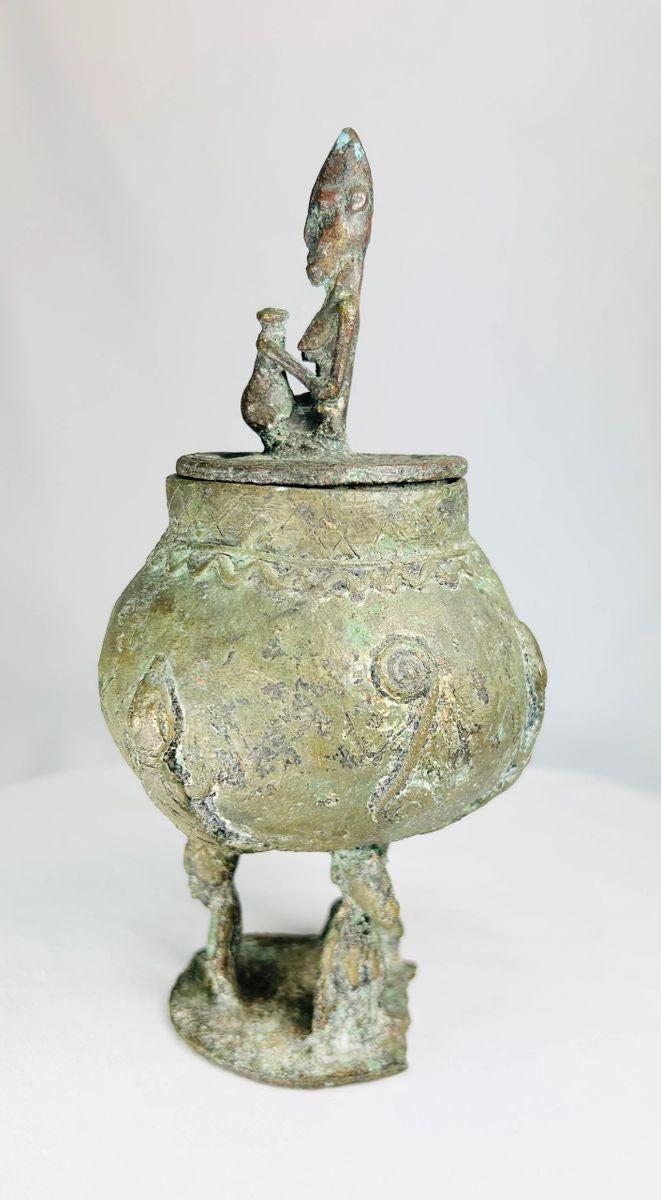Dogon Bronze Ritual Container | Anthropomorphic Vessel with Figure Lid | 19th Century CE
Description
More
Less
Historical Context & Origin
Region: Mali, West Africa
Material: Bronze
Period: 19th Century CE
Description
This exceptional bronze container is a remarkable artifact of Dogon craftsmanship and spirituality. The Dogon people, residing in the Bandiagara Escarpment of Mali, are celebrated for their rich cultural heritage, artistic traditions, and unique cosmology. Used in ritual and healing contexts, this vessel embodies the Dogon devotion to spiritual practices and their symbolic connection to the universe. Its striking form—featuring a bulbous body, anthropomorphic legs, and a human figure on the lid—underscores both its ritual function and artistic significance.
Features
- Bulbous body decorated with engraved spiral and geometric motifs
- Sculptural human figure on the lid, symbolizing a healer or spiritual guide
- Supported by three stylized anthropomorphic legs, emphasizing human connection and symbolism
- Verdigris patina across the surface, enhancing its authenticity and age
- Compact yet dynamic form, designed for sacred and practical use
Cultural Significance
Dogon bronze containers were traditionally used to store sacred herbs, powders, or medicines in ritual ceremonies, linking daily life with spiritual and cosmological beliefs. The engraved motifs symbolize interconnectedness and spiritual energy, while the anthropomorphic details highlight the human role in bridging earthly and divine realms. This vessel exemplifies the Dogon worldview, where art, ritual, and healing practices converge into a unified cultural expression.
Condition
The container is well-preserved, with a stable structure and richly aged verdigris patina. Signs of wear and surface oxidation are consistent with ritual use and age, further affirming its authenticity.
Dimensions (approximate)
Height: 7.5 in
Age
19th Century CE
Learn More
Discover the History and Culture of the Dogon People
Explore Our Curated Collection of Authentic Ethnographic Relics
Description
Historical Context & Origin
Region: Mali, West Africa
Material: Bronze
Period: 19th Century CE
Description
This exceptional bronze container is a remarkable artifact of Dogon craftsmanship and spirituality. The Dogon people, residing in the Bandiagara Escarpment of Mali, are celebrated for their rich cultural heritage, artistic traditions, and unique cosmology. Used in ritual and healing contexts, this vessel embodies the Dogon devotion to spiritual practices and their symbolic connection to the universe. Its striking form—featuring a bulbous body, anthropomorphic legs, and a human figure on the lid—underscores both its ritual function and artistic significance.
Features
- Bulbous body decorated with engraved spiral and geometric motifs
- Sculptural human figure on the lid, symbolizing a healer or spiritual guide
- Supported by three stylized anthropomorphic legs, emphasizing human connection and symbolism
- Verdigris patina across the surface, enhancing its authenticity and age
- Compact yet dynamic form, designed for sacred and practical use
Cultural Significance
Dogon bronze containers were traditionally used to store sacred herbs, powders, or medicines in ritual ceremonies, linking daily life with spiritual and cosmological beliefs. The engraved motifs symbolize interconnectedness and spiritual energy, while the anthropomorphic details highlight the human role in bridging earthly and divine realms. This vessel exemplifies the Dogon worldview, where art, ritual, and healing practices converge into a unified cultural expression.
Condition
The container is well-preserved, with a stable structure and richly aged verdigris patina. Signs of wear and surface oxidation are consistent with ritual use and age, further affirming its authenticity.
Dimensions (approximate)
Height: 7.5 in
Age
19th Century CE
Learn More
Discover the History and Culture of the Dogon People
Explore Our Curated Collection of Authentic Ethnographic Relics
You May Also Like


















